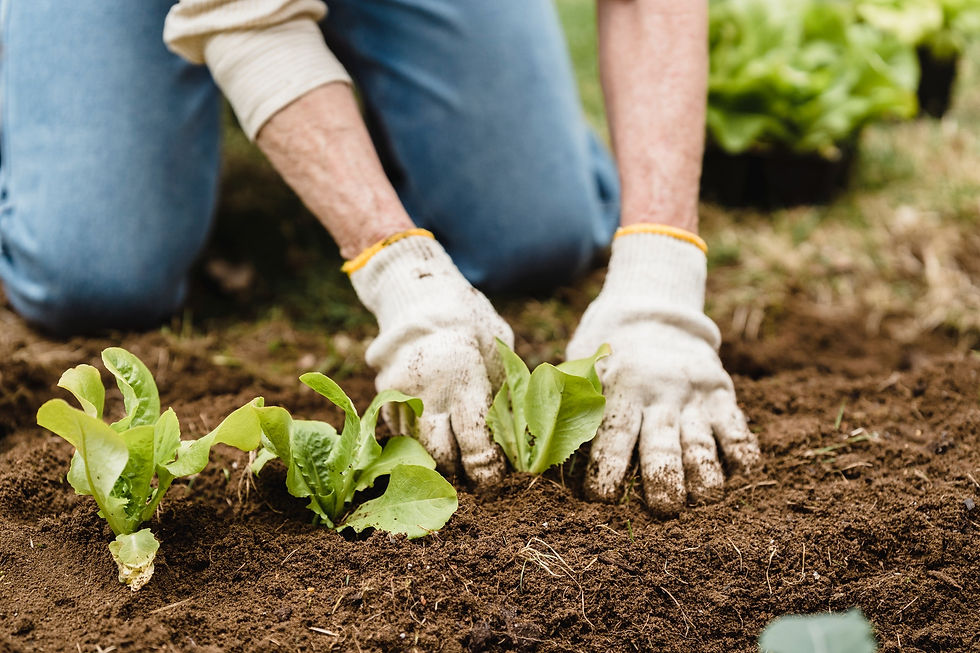Natural biological fighters in climate crisis
- Kartik Verma

- Apr 17, 2022
- 3 min read
Updated: May 26, 2022

Today we look at how large unseen biological networks are our biggest supporters in our fight against climate change. Specifically, we are going to look at fungi and sea-kelp which act as carbon sinks to carbon emissions.
What to expect today:
An under appreciated ally in climate crisis: Fungi

Fungi are largely invisible ecosystem engineers. Most live as branching, fusing networks of tubular cells known as mycelium. Globally, the total length of fungal mycelium in the top 10cm of soil is more than 450 quadrillion km: about half the width of our galaxy.
Underground - “wood wide web”
Most plants depend on mycorrhizal fungi – derived from the Greek words for fungus (mykes) and root (rhiza) – which weave themselves through roots, provide plants with crucial nutrients, defend them from disease and link them in shared networks sometimes referred to as the “wood wide web”. Plants supply carbon to their fungal partners in exchange for nutrients like nitrogen and phosphorus. In a way, these fungi are a more fundamental part of planthood than leaves, wood, fruit, flowers or even roots.
How much carbon are we talking about?
Globally, at least 5bn tons of carbon dioxide are sequestered within mycorrhizal networks each year, a quantity roughly equivalent to the amount of carbon dioxide emitted annually by the US (unpublished data suggests this figure is closer to 17bn tons). Even small reductions in the prevalence of fungal networks have significant consequences: a release of just 0.1% of the carbon now stored in Europe’s soils is equal to the annual emissions from 100m cars.
Source:Guardian
Technological tool to map kelp

Scientists have created the world’s largest digital map of kelp forests, a potentially powerful tool to track the health of these underwater rainforests that store large amounts of carbon dioxide but are threatened by warming oceans. Check out the interactive map here.
How was the tool created?
Researchers trained computers to recognize characteristics of kelp in four decades’ worth of Landsat satellite images. They then spent years compiling that data so it could be used to visualize fluctuations in the size of kelp forests over time. Though the satellites are deployed to recognize phenomena on land, canopies of kelp forests share visual attributes with terrestrial forest canopies, making them detectable from space.
The planet optimist published an edition on how satellites are used in the fight against climate change - check it out here.
How does kelp help sequester carbon?
A paper published in 2016 in Nature Geosciences compiled data from previous studies in order to provide an estimate of how much atmospheric carbon is being removed by macroalgae. Their rough estimate suggests that around 200 million tons of carbon dioxide are being sequestered by macroalgae every year. Here is a quick diagram to help you understand how microalgae found in deep sea help sequester carbon from kelp.

How else do kelp help our environment?
In addition to being a bulwark against climate change, kelp forests provide habitat for some 800 marine species, including sea otters, whales and commercially valuable seafood. In places like California, kelp helps protect coastlines from storms and grooms waves for a multimillion-dollar surfing industry. It’s also an ingredient in food and cosmetics and can be refined as a biofuel.
Source: Bloomberg, Harvard Study
Our take
Earth’s ecosystem has a very delicate balance which has been perfected over hundreds of millions of years and without doubt humans are challenging this balance. These unseen allies like seaweed, kelp and fungi have helped keep this balance for long and human activity is putting them at risk. We don’t realize their importance because we don't interact with them (for most people) ever but they are critical in the fight against climate change. Fungi itself sequesters as much carbon emissions as the entire United States and is being threatened by climate change. We need more awareness and action by governments to save these ecosystems.
Recommendations from the team
Birds for recycling - How a person trained birds to pick up bottle caps (1 min video)
TED - 6 ways mushrooms can save the world (18 min video)






Comments